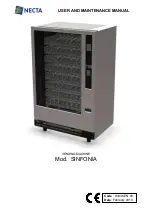
113
11. Lower presser foot.
Touch
key on LCD screen.
(Press
key to interrupt bobbin winding and
restart bobbin winding, if necessary.)
12. After bobbin is wound, thread is cut and
machine is ready for embroidery sewing.
NOTE: If the spool of fine bobbin embroidery
thread runs out during automatic bobbin
winding, the machine will stop and a message
will appear. Manually thread the bobbin thread
into bobbin case tension. See page 22
.
Place new
spool of fine bobbin embroidery thread and
rethread automatic bobbin winding system.
Press
key to resume embroidery sewing.
Threading the Machine
Depending on the type of embroidery thread, use
either automatic top threading (see page 23) or
manual top threading (see page 24).
Preparing the Fabric
All embroidery needs some form of stabilizer that
can be easily removed. Use a stabilizer appropriate
to the fabric and project. Common forms of stabilizer
for embroidery sewing are fusible or adhesive, tear-
away, heat-away or wash-away.
The fusible or adhesive type is recommended for
stretch fabrics and fabrics that might shrink.
Most stabilizers should be used on the wrong side of
the fabric. Wash-away stabilizer may be placed on
top of some napped fabrics.
For any type of stabilizer, prepare a piece larger than
the embroidery frame and place it in the frame so
that the entire piece can be fastened within. Fabric
should be taut.
!1
The embroidery thread colors
referenced on the final layout screen
are based on Madeira 40 wt.
embroidery thread. See page 161 for a
Thread Color Conversion Chart.
Summary of Contents for XQUISIT 2
Page 18: ...17...
Page 87: ...86 7 mm Script NOTE Use T foot 15 and 25 mm Script NOTE Use T foot Outline NOTE Use T foot...
Page 88: ...87 Utility U NOTE Use I foot Heirloom H NOTE Use I foot Quilt Q NOTE Use I foot...
Page 107: ...106 Century Bold Script Euro...
Page 108: ...107 Designs Continuous Hoop...
Page 163: ...162...
















































